MARKETING
You’re Not Ready for a DAM (Unless You Do This First)
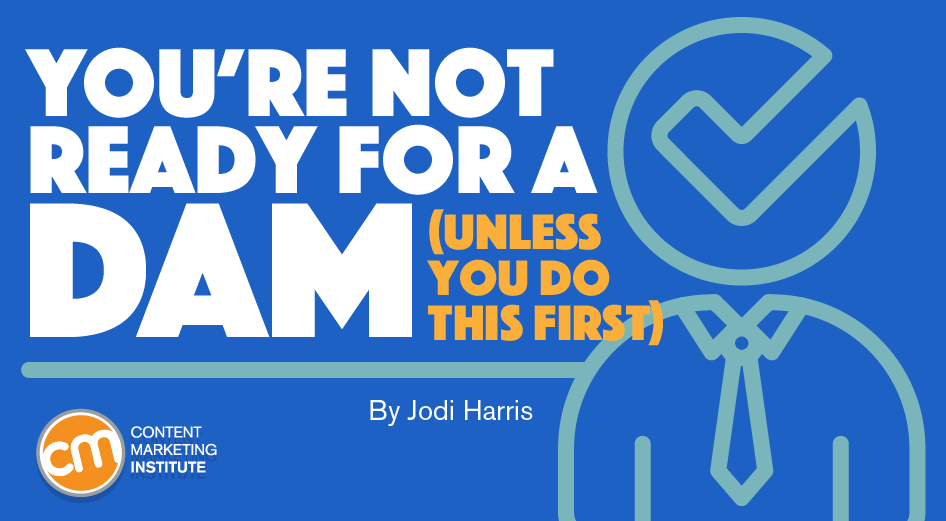
With the amount of content organizations produce – and the sheer volume of multimedia assets and formats – it’s time to consider a digital asset management system. A DAM can increase production efficiency, enhance cross-team operability, and improve marketing productivity and performance.
Marketers spend over 60% of their time retrieving information or restructuring lost assets and other low-value tasks. Implementing a DAM system may be the best way to reclaim that wasted time.
Yet, two operational challenges often stand in the way of effective implementation. The first is identifying the content processes the DAM should help facilitate. It’s often an overlooked consideration, particularly for businesses without a structured content process or governance strategy.
The second challenge arises in detailing the organizational criteria for a DAM system before completing the complex and time-consuming selection process. How will it be used? Where does it fit in the content workflow? If you don’t have those answers, it’s like shopping for a car without knowing if it will be used to haul bricks or compete in a street race.
If you don’t know your #content processes and organization criteria, it’s hard to make the right DAM system choice, says @joderama via @CMIContent @Aprimo. Click To Tweet
These obstacles – on top of requirements like securing budget approval and executive buy-in, and managing implementation, configuration, and integration – can make the very thought of working with a DAM system too intimidating to consider. But with a little advanced planning and a focused approach, you can lower some of those barriers and speed up your path to realizing the benefits these systems can offer.
Clearing the content tech confusion
At their simplest, DAM systems are used by enterprises to store, organize, and retrieve digital media assets for efficient use across all stages of the content creation lifecycle. They also enable effective governance of those assets by managing the digital rights, access permissions, and other standards established for creating and applying content across all functions of the organization.
Used in tandem with a web content management system (WCM) and/or other marketing automation technology (like email management systems and social media publishing suites), a DAM can make it easier for content creators to locate brand assets like photos, audio and video footage, animations, and other graphics, track changes as they move through production, and ensure they are properly sized, formatted, and tagged for use on chosen distribution platforms and channels.
While definitive statistics on content marketer adoption of DAM systems are hard to come by, it’s logical to assume they are underused, given that CMI’s B2B Benchmarks, Budgets, and Trends: Insights for 2022 research found only 49% of marketers say their company uses a content management system (CMS).
Only 49% of #B2B marketers say their company uses a #content management system according to @CMIContent #research via @joderama. Click To Tweet
Yet, CMI’s chief strategy advisor Robert Rose thinks this finding may indicate a fundamental content tech misperception that a DAM system and a CMS are interchangeable: “Companies say they don’t have a CMS. They do – at least when it comes to a system to manage content on their website (e.g., Drupal, WordPress). The confusion occurs because the term ‘content management system’ has become synonymous with digital assets management (DAM).”
While the two technologies have overlapping functions, neither can do the job effectively unless the enterprise aligns on the functions each system facilitates, who will use each, and how each can be used to its potential.
“A website CMS or social media tool typically manages media assets from their finalized state through publication and measurement. Yet, they provide little consistency in how content gets handled across various formats. In contrast, a DAM system is going to provide full process efficiency from the spark of ideation through creation, production, and multi-platform publication, as well as when and where the asset will ultimately be archived for future reuse and repurposing,” Robert says.
As I mentioned, managing those operational considerations is often the biggest challenge when adding any new technology to your content stack. Fortunately, Robert’s exercise below might just save you a world of hurt and hassle.
ADVERTISEMENT
Definitive Guide to Content Operations
Get a deep dive into Content Operations: what it is, why it’s so important for organizations in every industry to embrace, what it’s capable of, and how you can build the best content operations solution for your teams. Download now.
Right preparation begets increased productivity
To select the right DAM system, you need to know which teams will use it, how they’re going to use it, and what they’ll use it for. That’s a lot of details and variations to sort through, and this is where many organizations trip up before they really get started.
Furthermore, no DAM system will function optimally right out of the box. It must be configured to accommodate your use cases, governance decisions, and team workflows. So, before you begin the purchase process, you need a clear view of the operational considerations and preparation involved to deliver a fully functioning system for your organization.
A DAM system won’t function optimally out of the box. It must be configured to your use cases, governance, and workflow, says @joderama via @CMIContent @Aprimo. Click To Tweet
Here are a few questions to answer:
- What content materials are required to produce each type of asset (e.g., product descriptions, company boilerplate, images, audio, video, graphics, interactive features)?
- What strategic purpose(s) will be served by the assets? Internal, external, both?
- What are the file formats? What internal and external resources and expertise are used to produce them?
- How will each asset be accessed, processed, and routed? Where might additions or exceptions exist?
- Should tasks happen concurrently or simultaneously?
- Who will be accountable for each task? Who else will be involved?
- What permissions, approvals, and other governance standards are needed before the asset can be published?
It’s enough to make any content manager’s head spin. And all that comes before you even think about the technical considerations, like how asset files will be named, categorized, tagged, stored, and managed for efficient use across teams and functions.
Inventory your operations in 2 steps
To stop your head from spinning, Robert suggests a streamlined operations management approach he uses with his consulting clients. Map the people and processes to produce one type of content for one purpose or part of the customer journey. The insights and information generated can help guide your DAM decision-making process and later expand to accommodate additional content types and purposes once you’ve purchased and are ready to implement a system.
Understand your #DAM needs with this exercise from @Robert_Rose: Map the people and processes to produce one type of #content for one purpose via @joderama @CMIContent @Aprimo. Click To Tweet
The two parts to this exercise are:
- Content lifecycle mapping: This ordered list outlines the critical steps and tasks to take a piece of content from ideation to execution. It provides a high-level view of this content type’s workflow as it’s routed through the development lifecycle and details who takes charge of the task at each stage.
- Responsible, Accountable, Consulted, Informed mapping: This responsibility assignment matrix (aka RACI matrix) identifies all the team members (internal and external) involved in each of the tasks as the leader or a collaborator. It visualizes how team resources are allocated so you can set clear responsibilities around asset management and identify potential areas for restructuring workflow for greater efficiency.
Let’s walk through the process.
Step 1: Identify key points and processes of your workflow
Outline all the tasks involved in creating a type of content. This example illustrates the workflow for a thought leadership e-book. Don’t worry about any special features or add-on tasks that apply under certain circumstances. Focus only on the tasks that typically are involved.
The template encompasses six stages – ideation, planning, creation, production, activation, and measurement. Fill in the main tasks for each stage. Use “who” and “what” tags in the template to determine whether to list the person responsible for managing that task (who) or noting the specific actions and considerations (what) before the content can move into the next stage. This breakdown details the stage-based questions to answer for our thought leadership e-book example:
- Content ideation: Who generates topics and ideas for the e-book? Who submits the ideas for approval? Does an approved idea align with a content goal? Who collects viable ideas and prepares them to enter the planning process?
- Planning: Where are viable ideas collected for consideration and prioritization? How are accepted ideas prioritized and approved for assignment?
- Creation: Who provides the assignment to the creator? What resources are needed to execute it? Who manages the related creation processes (e.g., editing, acquiring permissions, design and layout, final review/approval)? Who shepherds the resulting assets into production?
- Production: How does production receive the content? What steps turn them into a publication-ready asset (i.e., how you’ll incorporate your e-book into a content marketing campaign)? Who delivers the final campaign assets to the team members involved in activation?
- Activation: How is the e-book added to the publishing schedule? What else is involved in activating it? Who else needs to be informed when it’s activated in-market?
- Measurement: What steps are taken to track, analyze, and report performance? What else needs to happen (e.g., archived for later repurposing by whom and where it is stored)?
You should repeat this process for every type of content produced – and all the assets and campaigns it might be applied to throughout your brand’s content experience. But detailing the workflow for even just one type of asset can surface the answers and information necessary to research, consider, and compare potential DAM solutions.
Step 2: Identify roles and responsibilities
Now that you have an overview of the tasks and routing details, you can zoom in on the people who make it happen.
For our e-book example, we’ll use a RACI template (like the sample shown below) to note all the team members who play a role at any stage in the outlined content lifecycle, as well as those who become involved when that content is used for other functions in the enterprise.
This Forbes article provides more detail on RACI charts and how to use them. But for our purposes, the main thing to know is that roles are divided into four categories:
- Responsible: These team members do the hands-on work – e.g., writing, editing, or designing the e-book, collecting assets and routing them to the appropriate point person, managing production schedules and deadlines, tracking and reporting performance data, etc. At least one person must be listed as responsible for each task, though anyone who actively contributes to that task should be included, too.
- Accountable: This is the one team member who answers for the proper completion of each task or deliverable. They ensure all prerequisite tasks, standards, and requirements are met. They determine and delegate responsibilities; and deliver any final approvals Note that while only one person should be listed as accountable at each stage, that person may also play a role in other tasks throughout the process.
- Consulted: These are the subject matter experts, advisory board members, or other parties who may contribute to or collaborate on tasks but don’t hold responsibility for their execution or how they are managed. For example, if a writer regularly consults with a brand team member to ensure they’ve accurately reflected key brand details in the e-book, the branding expert would be listed as a consultant.
- Informed: If anyone else needs to be looped in on project status or notified when the e-book has been launched into the market (e.g., a sales team contact, a sponsor, an executive stakeholder), list them.
As Robert explains, the columns refer to how common purpose-driven content types created for a specific asset (e.g., an about-our-company-and-products section of copy featured in e-books) might be mapped and managed for other uses (i.e., for thought leadership content marketing efforts, inclusion in a story for marketing, sales sheet, repackaged for ad-hoc needs).
Click to enlarge
As a bonus, working through this process also helps reveal hidden redundancies and resource deficits that can be addressed to improve the overall efficiency and effectiveness of your content operations.
For example, you could identify a role overloaded with responsibilities and accountability at certain stages of production that, if rebalanced, could help clear recurring bottlenecks. Or you could discover the workflow doesn’t account for the delivery of an asset to other functional departments that could be resolved by a simple workflow update to ensure smoother cross-team alignment.
HANDPICKED RELATED CONTENT:
Putting it all together
Mapping these roles and responsibilities across all the functions enterprise-wide helps ensure all the critical players are involved in your DAM decision-making conversations. When combined with the insights collected in the content lifecycle template, you have a high-level understanding of the operational needs to account for when you’re ready to evaluate and compare potential DAM solutions.
For a more comprehensive audit of your content operations, add details for all other content types in these templates. But even if you only have time to work through this abbreviated process, you’ll come away with a solid plan for turning your DAM dreams into an achievable reality.
Cover image by Joseph Kalinowski/Content Marketing Institute
MARKETING
18 Events and Conferences for Black Entrepreneurs in 2024
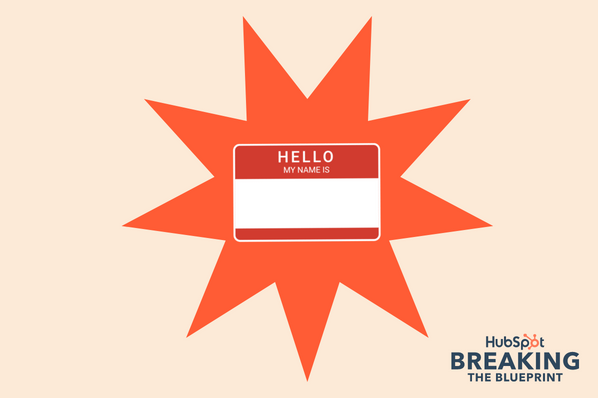
Welcome to Breaking the Blueprint — a blog series that dives into the unique business challenges and opportunities of underrepresented business owners and entrepreneurs. Learn how they’ve grown or scaled their businesses, explored entrepreneurial ventures within their companies, or created side hustles, and how their stories can inspire and inform your own success.
It can feel isolating if you’re the only one in the room who looks like you.
MARKETING
IAB Podcast Upfront highlights rebounding audiences and increased innovation
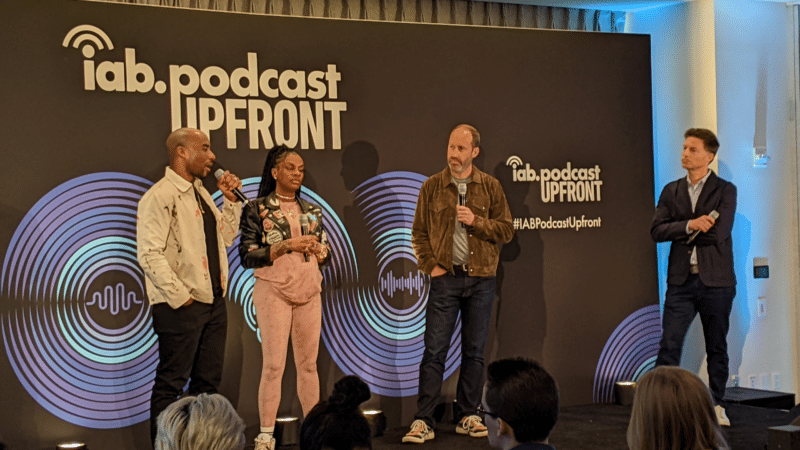
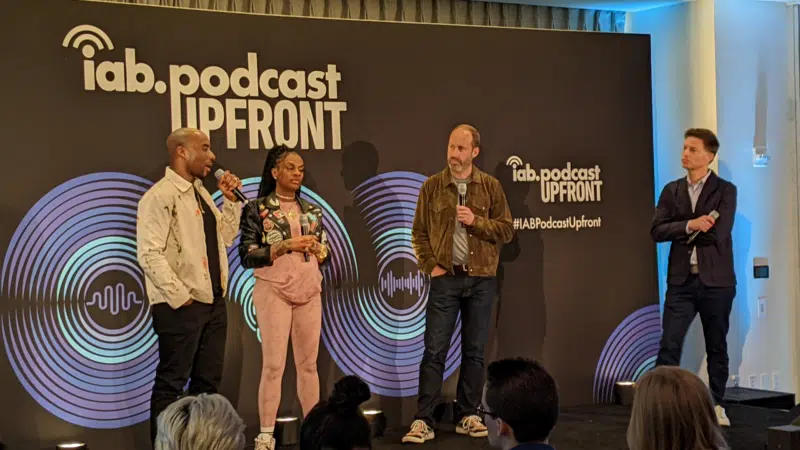
Podcasts are bouncing back from last year’s slowdown with digital audio publishers, tech partners and brands innovating to build deep relationships with listeners.
At the IAB Podcast Upfront in New York this week, hit shows and successful brand placements were lauded. In addition to the excitement generated by stars like Jon Stewart and Charlamagne tha God, the numbers gauging the industry also showed promise.
U.S. podcast revenue is expected to grow 12% to reach $2 billion — up from 5% growth last year — according to a new IAB/PwC study. Podcasts are projected to reach $2.6 billion by 2026.
The growth is fueled by engaging content and the ability to measure its impact. Adtech is stepping in to measure, prove return on spend and manage brand safety in gripping, sometimes contentious, environments.
“As audio continues to evolve and gain traction, you can expect to hear new innovations around data, measurement, attribution and, crucially, about the ability to assess podcasting’s contribution to KPIs in comparison to other channels in the media mix,” said IAB CEO David Cohen, in his opening remarks.
Comedy and sports leading the way
Podcasting’s slowed growth in 2023 was indicative of lower ad budgets overall as advertisers braced for economic headwinds, according to Matt Shapo, director, Media Center for IAB, in his keynote. The drought is largely over. Data from media analytics firm Guideline found podcast gross media spend up 21.7% in Q1 2024 over Q1 2023. Monthly U.S. podcast listeners now number 135 million, averaging 8.3 podcast episodes per week, according to Edison Research.
Comedy overtook sports and news to become the top podcast category, according to the new IAB report, “U.S. Podcast Advertising Revenue Study: 2023 Revenue & 2024-2026 Growth Projects.” Comedy podcasts gained nearly 300 new advertisers in Q4 2023.
Sports defended second place among popular genres in the report. Announcements from the stage largely followed these preferences.
Jon Stewart, who recently returned to “The Daily Show” to host Mondays, announced a new podcast, “The Weekly Show with Jon Stewart,” via video message at the Upfront. The podcast will start next month and is part of Paramount Audio’s roster, which has a strong sports lineup thanks to its association with CBS Sports.
Reaching underserved groups and tastes
IHeartMedia toasted its partnership with radio and TV host Charlamagne tha God. Charlamagne’s The Black Effect is the largest podcast network in the U.S. for and by black creators. Comedian Jess Hilarious spoke about becoming the newest co-host of the long-running “The Breakfast Club” earlier this year, and doing it while pregnant.
The company also announced a new partnership with Hello Sunshine, a media company founded by Oscar-winner Reese Witherspoon. One resulting podcast, “The Bright Side,” is hosted by journalists Danielle Robay and Simone Boyce. The inspiration for the show was to tell positive stories as a counterweight to negativity in the culture.
With such a large population listening to podcasts, advertisers can now benefit from reaching specific groups catered to by fine-tuned creators and topics. As the top U.S. audio network, iHeartMedia touted its reach of 276 million broadcast listeners.
Connecting advertisers with the right audience
Through its acquisition of technology, including audio adtech company Triton Digital in 2021, as well as data partnerships, iHeartMedia claims a targetable audience of 34 million podcast listeners through its podcast network, and a broader audio audience of 226 million for advertisers, using first- and third-party data.
“A more diverse audience is tuning in, creating more opportunities for more genres to reach consumers — from true crime to business to history to science and culture, there is content for everyone,” Cohen said.
The IAB study found that the top individual advertiser categories in 2023 were Arts, Entertainment and Media (14%), Financial Services (13%), CPG (12%) and Retail (11%). The largest segment of advertisers was Other (27%), which means many podcast advertisers have distinct products and services and are looking to connect with similarly personalized content.
Acast, the top global podcast network, founded in Stockholm a decade ago, boasts 125,000 shows and 400 million monthly listeners. The company acquired podcast database Podchaser in 2022 to gain insights on 4.5 million podcasts (at the time) with over 1.7 billion data points.
Measurement and brand safety
Technology is catching up to the sheer volume of content in the digital audio space. Measurement company Adelaide developed its standard unit of attention, the AU, to predict how effective ad placements will be in an “apples to apples” way across channels. This method is used by The Coca-Cola Company, NBA and AB InBev, among other big advertisers.
In a study with National Public Media, which includes NPR radio and popular podcasts like the “Tiny Desk” concert series, Adelaide found that NPR, on average, scored 10% higher than Adelaide’s Podcast AU Benchmarks, correlating to full-funnel outcomes. NPR listeners weren’t just clicking through to advertisers’ sites, they were considering making a purchase.
Advertisers can also get deep insights on ad effectiveness through Wondery’s premium podcasts — the company was acquired by Amazon in 2020. Ads on its podcasts can now be managed through the Amazon DSP, and measurement of purchases resulting from ads will soon be available.
The podcast landscape is growing rapidly, and advertisers are understandably concerned about involving their brands with potentially controversial content. AI company Seekr develops large language models (LLMs) to analyze online content, including the context around what’s being said on a podcast. It offers a civility rating that determines if a podcast mentioning “shootings,” for instance, is speaking responsibly and civilly about the topic. In doing so, Seekr adds a layer of confidence for advertisers who would otherwise pass over an opportunity to reach an engaged audience on a topic that means a lot to them. Seekr recently partnered with ad agency Oxford Road to bring more confidence to clients.
“When we move beyond the top 100 podcasts, it becomes infinitely more challenging for these long tails of podcasts to be discovered and monetized,” said Pat LaCroix, EVP, strategic partnerships at Seekr. “Media has a trust problem. We’re living in a time of content fragmentation, political polarization and misinformation. This is all leading to a complex and challenging environment for brands to navigate, especially in a channel where brand safety tools have been in the infancy stage.”
Dig deeper: 10 top marketing podcasts for 2024
MARKETING
Foundations of Agency Success: Simplifying Operations for Growth


Why do we read books like Traction, Scaling Up, and the E-Myth and still struggle with implementing systems, defining processes, and training people in our agency?
Those are incredibly comprehensive methodologies. And yet digital agencies still suffer from feast or famine months, inconsistent results and timelines on projects, quality control, revisions, and much more. It’s not because they aren’t excellent at what they do. I
t’s not because there isn’t value in their service. It’s often because they haven’t defined the three most important elements of delivery: the how, the when, and the why.
Complicating our operations early on can lead to a ton of failure in implementing them. Business owners overcomplicate their own processes, hesitate to write things down, and then there’s a ton of operational drag in the company.
Couple that with split attention and paper-thin resources and you have yourself an agency that spends most of its time putting out fires, reacting to problems with clients, and generally building a culture of “the Founder/Creative Director/Leader will fix it” mentality.
Before we chat through how truly simple this can all be, let’s first go back to the beginning.
When we start our companies, we’re told to hustle. And hustle hard. We’re coached that it takes a ton of effort to create momentum, close deals, hire people, and manage projects. And that is all true. There is a ton of work that goes into getting a business up and running.


The challenge is that we all adopt this habit of burning the candle at both ends and the middle all for the sake of growing the business. And we bring that habit into the next stage of growth when our business needs… you guessed it… exactly the opposite.
In Mike Michalowitz’s book, Profit First he opens by insisting the reader understand and accept a fundamental truth: our business is a cash-eating monster. The truth is, our business is also a time-eating monster. And it’s only when we realize that as long as we keep feeding it our time and our resources, it’ll gobble everything up leaving you with nothing in your pocket and a ton of confusion around why you can’t grow.
Truth is, financial problems are easy compared to operational problems. Money is everywhere. You can go get a loan or go create more revenue by providing value easily. What’s harder is taking that money and creating systems that produce profitably. Next level is taking that money, creating profit and time freedom.
In my bestselling book, The Sabbatical Method, I teach owners how to fundamentally peel back the time they spend in their company, doing everything, and how it can save owners a lot of money, time, and headaches by professionalizing their operations.
The tough part about being a digital agency owner is that you likely started your business because you were great at something. Building websites, creating Search Engine Optimization strategies, or running paid media campaigns. And then you ended up running a company. Those are two very different things.


How to Get Out of Your Own Way and Create Some Simple Structure for Your Agency…
- Start Working Less
I know this sounds really brash and counterintuitive, but I’ve seen it work wonders for clients and colleagues alike. I often say you can’t see the label from inside the bottle and I’ve found no truer statement when it comes to things like planning, vision, direction, and operations creation.
Owners who stay in the weeds of their business while trying to build the structure are like hunters in the jungle hacking through the brush with a machete, getting nowhere with really sore arms. Instead, define your work day, create those boundaries of involvement, stop working weekends, nights and jumping over people’s heads to solve problems.
It’ll help you get another vantage point on your company and your team can build some autonomy in the meantime.
- Master the Art of Knowledge Transfer
There are two ways to impart knowledge on others: apprenticeship and writing something down. Apprenticeship began as a lifelong relationship and often knowledge was only retained by ONE person who would carry on your method.
Writing things down used to be limited (before the printing press) to whoever held the pages.
We’re fortunate that today, we have many ways of imparting knowledge to our team. And creating this habit early on can save a business from being dependent on any one person who has a bunch of “how” and “when” up in their noggin.
While you’re taking some time to get out of the day-to-day, start writing things down and recording your screen (use a tool like loom.com) while you’re answering questions.


Deposit those teachings into a company knowledge base, a central location for company resources. Some of the most scaleable and sellable companies I’ve ever worked with had this habit down pat.
- Define Your Processes
Lean in. No fancy tool or software is going to save your company. Every team I’ve ever worked with who came to me with a half-built project management tool suffered immensely from not first defining their process. This isn’t easy to do, but it can be simple.
The thing that hangs up most teams to dry is simply making decisions. If you can decide how you do something, when you do it and why it’s happening that way, you’ve already won. I know exactly what you’re thinking: our process changes all the time, per client, per engagement, etc. That’s fine.
Small businesses should be finding better, more efficient ways to do things all the time. Developing your processes and creating a maintenance effort to keep them accurate and updated is going to be a liferaft in choppy seas. You’ll be able to cling to it when the agency gets busy.
“I’m so busy, how can I possibly work less and make time for this?”


You can’t afford not to do this work. Burning the candle at both ends and the middle will catch up eventually and in some form or another. Whether it’s burnout, clients churning out of the company, a team member leaving, some huge, unexpected tax bill.
I’ve heard all the stories and they all suck. It’s easier than ever to start a business and it’s harder than ever to keep one. This work might not be sexy, but it gives us the freedom we craved when we began our companies.
Start small and simple and watch your company become more predictable and your team more efficient.
-

 PPC6 days ago
PPC6 days agoHow the TikTok Algorithm Works in 2024 (+9 Ways to Go Viral)
-

 SEO5 days ago
SEO5 days agoHow to Use Keywords for SEO: The Complete Beginner’s Guide
-

 SEO7 days ago
SEO7 days agoBlog Post Checklist: Check All Prior to Hitting “Publish”
-

 MARKETING6 days ago
MARKETING6 days agoHow To Protect Your People and Brand
-

 SEARCHENGINES7 days ago
SEARCHENGINES7 days agoGoogle Started Enforcing The Site Reputation Abuse Policy
-

 PPC7 days ago
PPC7 days agoHow to Brainstorm Business Ideas: 9 Fool-Proof Approaches
-

 MARKETING7 days ago
MARKETING7 days agoElevating Women in SEO for a More Inclusive Industry
-

 MARKETING3 days ago
MARKETING3 days agoAdvertising on Hulu: Ad Formats, Examples & Tips














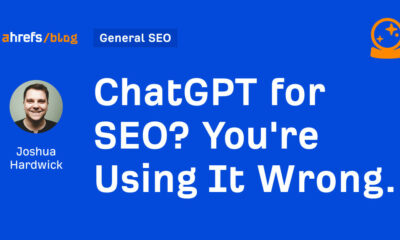




You must be logged in to post a comment Login